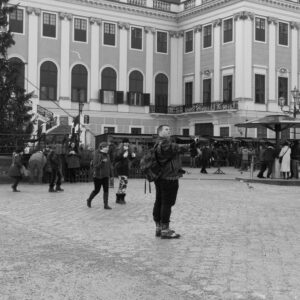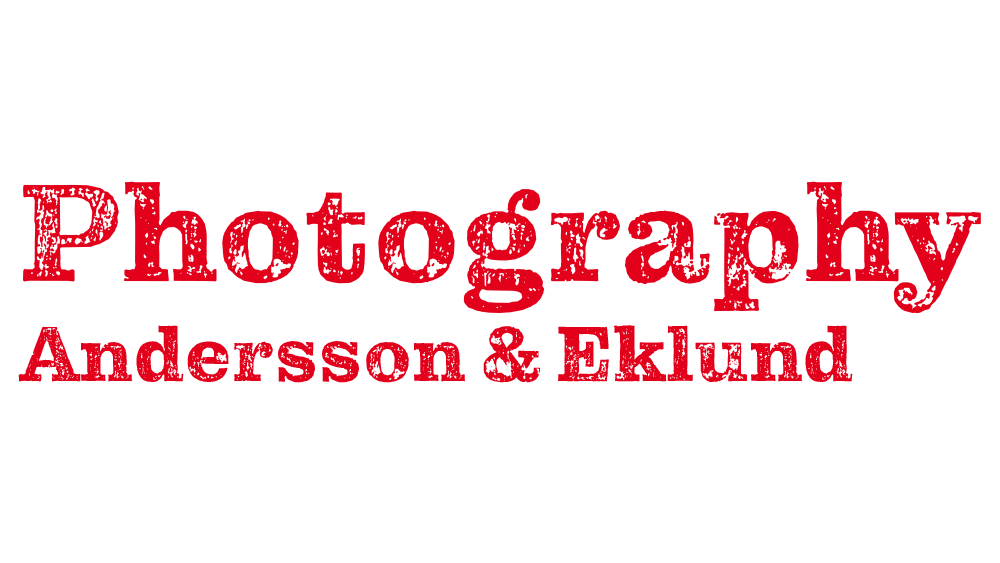A fresh start
As long as it's fun
Magnus L Andersson
This is the first post at our new site to present some images, words, technology and processing. It is not intended to be anything else than our naive effort as amateurs with an interest in images and technology.
Photography has for Magnus been coming and going, and with a renewed interest by the Leica M Monochrom and few years of capturing the world around followed. However, in 2016 he turned ill by an antibiotics poisoning that has taken almost three years to recover from to have the energy to give photography a new chance.
One shot at a time
If you like our work, you are more than welcome to follow us at Instagram or have a look at Fotosidan (Swedish site for photographers) or LFI (international site for mainly images captured by Leica equipment). You are also welcome to contact us at info@anderssoneklund.se for questions about our work, and to share links to this post.
Life goes on
I, that is Magnus, began my photographic journey around 1980 in a smelly darkroom at the school with an Olympus and Tri-X. A long series of endless evenings trying to master the art of turning the film into images was not that successful, but I did actually thought about trying to become a photographer. But, it was, already then, not the best way to get a decent job and I continued to study to a telecom engineer.
Holidays and Birthdays
Years passed and the Olympus was mainly used to capture holidays and birthdays – how many birthday cakes have been photographed in the world?
Studies were followed by work and traveling around the globe, but not a single photo was taken. The reason was most probably lack of time and interest with a demanding job, but looking back it was a mistake not to try to share my views of the world.
Entering the digital era
Around 2009, having left my job after 10 years, I realized that analog film had turned into memory cards and lab into software engineering. I decided to buy a Canon 5D Mk II and take up photography again, mainly to cover local events and gatherings.
Having carried more and more equipment for a few years I felt that, even though I had not spent time in a darkroom, my hobby had turned into weightlifting and hours in front of a computer screen with thousands of images of a single sailing boat or bird to try to get the best possible shot.
So yet again I got bored…
The Leica way
I knew I liked photography, especially black and white, but hated to carry tons of lenses. Then, in 2012 Leica announced that they would offer a b/w camera almost the size of my old analog Olympus. Since I had the financial means, I received the second copy to reach Sweden and a new era began.
The only reason for buying it was that it was light, and I hoped to be able to cut down on the time from rays of light to a print. One thing that I was unaware of was that having a Leica means that you always have to justify your investment.
During a few years I was very happy with the camera, but I started to feel annoyed by all these people at some photography sites always arguing that only lawyers and doctors have Leicas and that made them not as good photographers as those buying a new high-tech AI-supported 20 frames per second camera to use at the “P setting”.

Whoever you are, your mother always loves you.
A rusty situation
The downfall began already 2013 with some mysterious “dust” showing up at the images, and the Leica M Monochrom being sent back and forth to Germany for months to try to get rid of it. Then came rumors of that the sensor could “rust” and needed a replacement, hence even more months in Germany before the camera returned.
At that point I really liked the lightness and way of working with the Leica, but was so fed up with the one I had that I went analog again with a Leica M-A in 2014. What could go wrong with a completely manual camera – the lever mechanism. So the faulty camera was sent back to Germany, and a few months later it arrived.
Going back to analog was fun, but then I realized that the Tetenal had been replaced with slow film scanners and tweaking to overcome digitalization problems.
Yes, I do have confidence in Leica, but have to say that I cannot understand how they can be happy with the time it takes for repairs. I will tell you more about the cameras and lenses in forthcoming posts.
Not only Russian agents get poisoned
In early 2016 my life made a turn I could not foresee with an antibiotics poisoning by the common drug Ciprofloxacin, resulting in for 3 months being unable to walk with tendinosis in both Achilles tendons and other creepy symptoms.
Not until 2018 I started to feel like there was a life to live, and photos to take. However, my father died in May, so that year was all about taking care of that.
So, finally 2019 and picking up the Leica M Monochrom again I realized that it was yet again rusty and the price to get it fixed was almost 16 000 SEK or upgrade to an M246, M10 or M10P. However, I decided that I don’t know what more I want from a camera than the M Monochrom based on the old M9 and went for a sensor replacement.
Here we are
So, here we are with a fresh start and a new blog to try to share my Leica adventures and Ann-Marie’s with a smartphone from travels to mainly Vienna and Marrakech. I will also present how our digital workflow looks like, and pros and cons of gear and tools.
We are amateurs at WordPress and novices at social media. I read once that school shooters often have few Facebook friends, so with my less than ten and Ann-Marie not even registered, we have a long way to go.
We will try to write those posts we want to read, and will try to cover reflections (the pencil icon), technology (the camera icon), processing (the images icon) and comments on our efforts (the quote icon) in our posts.
We cannot promise anything, but hope you enjoy your time here, and you’re welcome to share this.
Gear, shot and comments
At this tab we will present as many technical aspects as we can on our images, from the used camera to settings.
However, we will focus on sharing comments on things we feel we did well and those we can improve in hindsight given the image at hand.
Processing
At this tab we will tell how we turn a raw file into the presented image, hoping to help some of you in your own efforts. We also offer a lengthy and evolving description of our image processing with Lightroom as the basis to have to spend as little time as possible to get consistent and acceptable post-processing of the images.
Feedback and media coverage
This tab will cover references to where we have shared our images, and in the future also allow you to comment on them. Until then, you are always welcome to do so at the places we post them.
